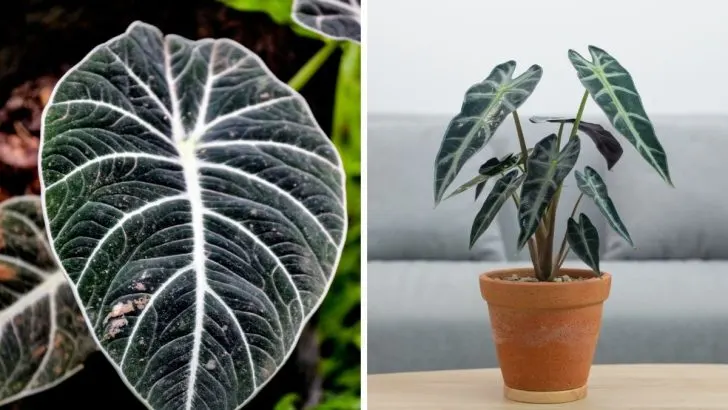There are several million tropical plants in the world, and we have prepared one for you today that you can have in your home. We are talking about the alocasia black velvet.
Its unusual appearance simply radiates beauty and you will not be able to resist it.
Make a little space in your living room or room, buy a new pot and learn all about caring for alocasia black velvet.
We are sure you will want to get it after reading this article. Or one of the other black house plants.
Let’s start then!
Alocasia Black Velvet Features
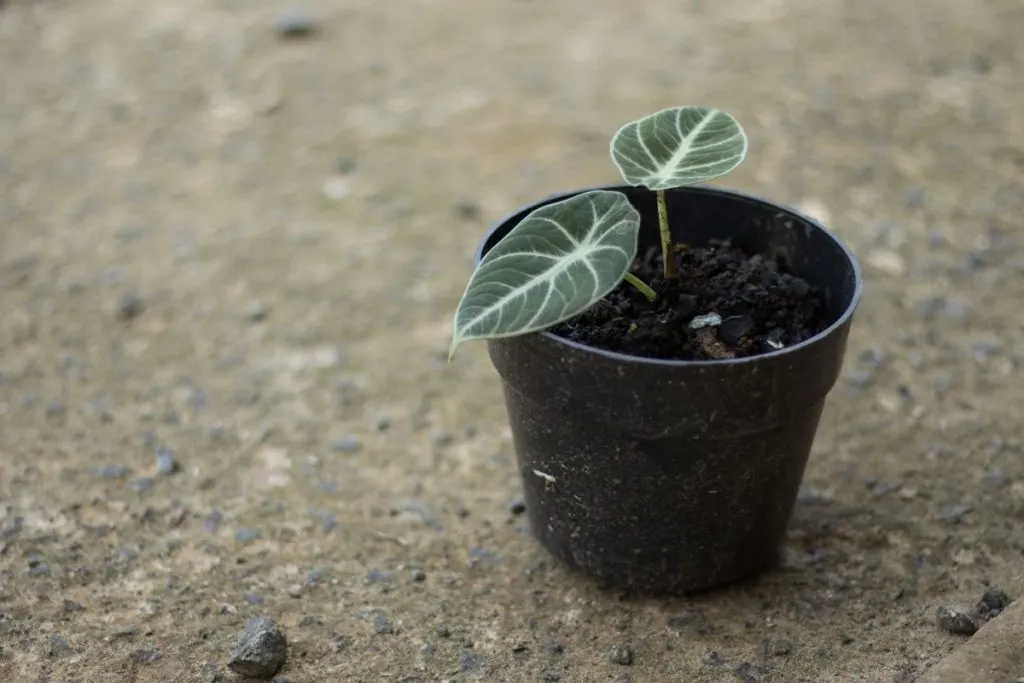
Alocasia black velvet (Alocasia Reginula) is exotic and elegant, with shiny silvery veins and roots on a dark and velvety background. Its black foliage is simply attractive and a must-have in your home.
In this article, we will show you everything you need to know to be satisfied with your care for the Alocasia Black Velvet plant.
A distinctive feature of Black Velvet is its black leaves and stunning roots of bright green, white, or silver. The thick, juicy leaves are heart-shaped and have a velvety, firm structure.
Surprisingly, dark leaves have evolved as a strategy to gather light in the dark under the canopy. The leaves absorb all visible light, and the pale roots reflect it.
Alocasia Black Velvet Care And Maintenance
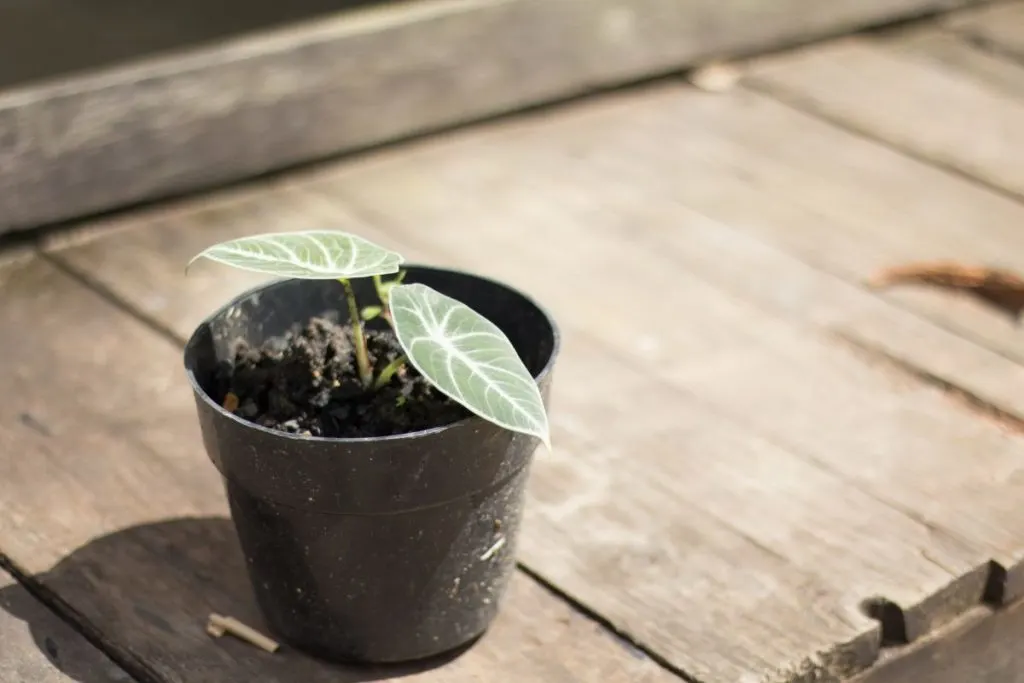
Caring for the alocasia plant comes down to the most accurate recreation conditions of native countries, tropical Asia.
Like any plant in the tropics, alocasia feels comfortable only at high humidity and temperature, which is especially difficult to achieve in apartments.
Let’s take a closer look at what all the care for alocasia black velvet requires.
Temperature Range For Alocasia Black Velvet
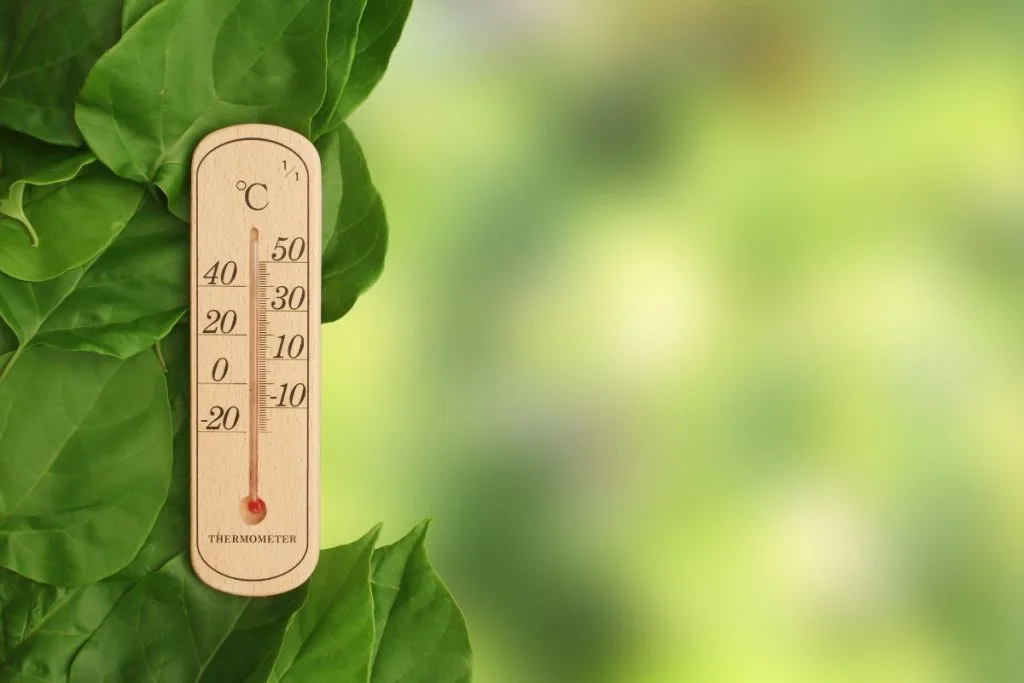
The optimum air temperature is between 60 and 65 F. Alocasia black velvet is thermophilic, and does not tolerate sharp temperature fluctuations and cold drafts.
Therefore, place it as far away as possible from windows and windows that open, especially in winter. In summer, on the contrary, the plant is protected from excessive heat.
Watering Frequency For Alocasia Black Velvet Plant
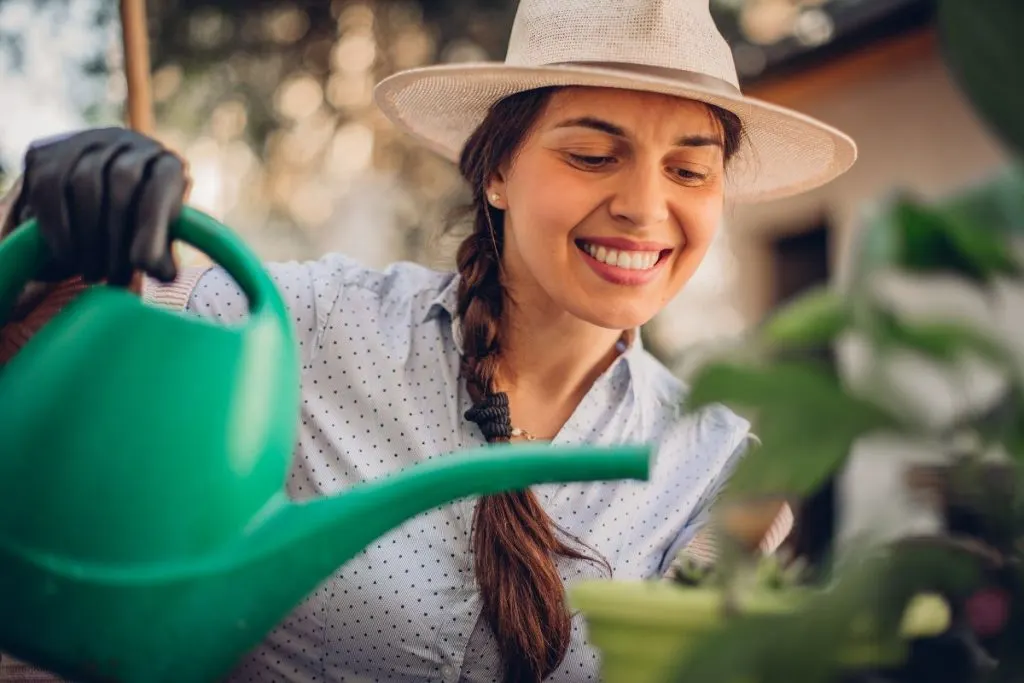
Abundant and at the same time careful watering is needed. The plant does not tolerate drying of the soil coma and water stagnation. During the period of active growth, keep the soil in the pot constantly moist.
Wet soil is a great option, but don’t water it all the time. Avoid watering your alocasia black velvet with standing water.
After a few hours, the excess moisture must be squeezed out of the plate. Its excess will inevitably lead to root rot. In winter, reduce watering slightly, which allows the underground top to dry out. Warm the water to room temperature.
Is Humid Environment Good For Alocasia Plant?
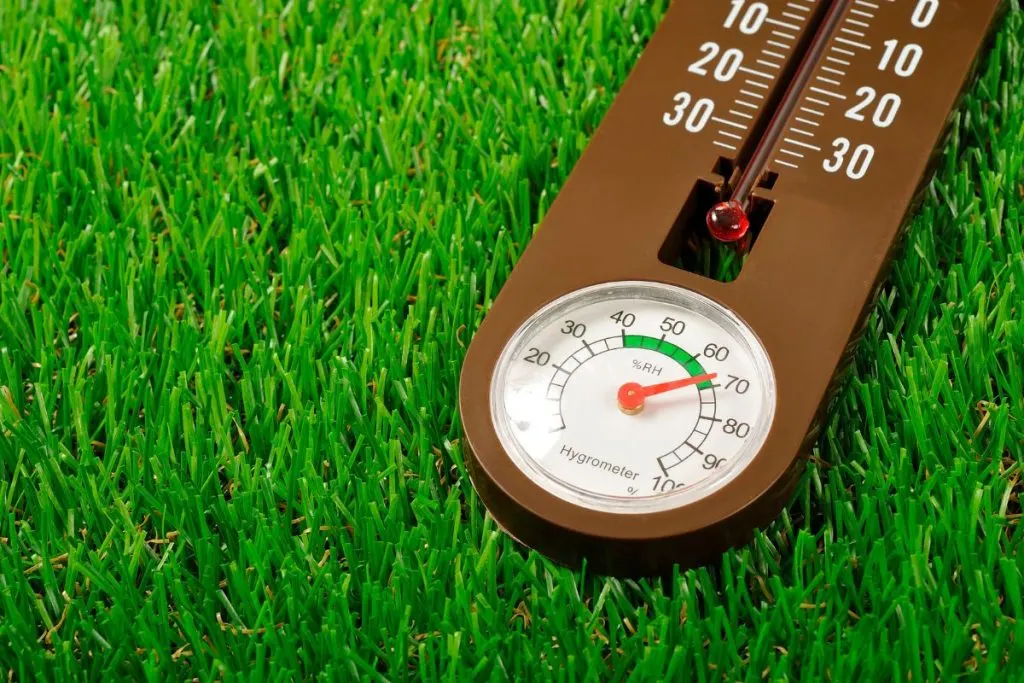
High humidity is much needed for this exotic plant! It is important to spray regularly, preferably kept in a greenhouse. Like any houseplant that “arrived” from the tropics, black velvet alocasia is demanding of air humidity. Spray it daily, and clean the leaves regularly of dust.
Avoid low humidity rooms for your alocasia species. This works for other alocasia plants as well. Dry air and soil dry might kill it.
You can increase the humidity by placing the pot on a tray with water and expanded clay. The best option, especially during the extra heat period – is a greenhouse.
Direct Sunlight Or Indirect Light For This Plant?
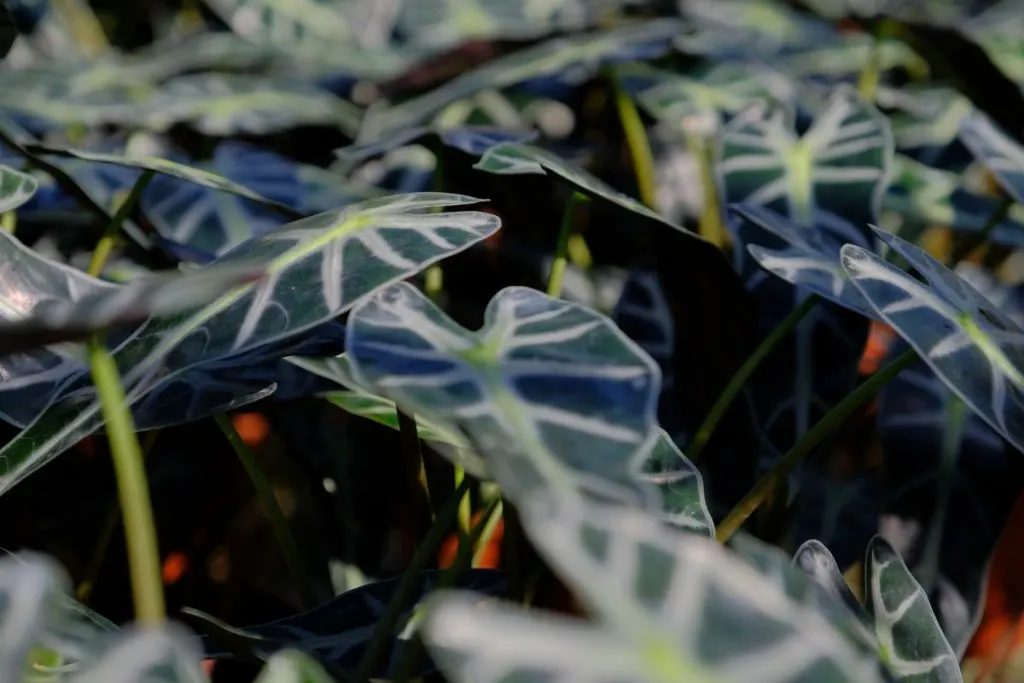
How much light does your alocasia needs? In winter, it needs bright diffused lighting. Place the plant in summer in partial shade.
Different types of alocasia have different lighting needs. Variegated or contrasting, like Sander’s alocasia, it needs more light, otherwise it will fade. Too much light and direct sun is a big no for this alocasia plant. It can cause crispy edges and even the death of your plant.
Varieties with monophonic leaves tolerate partial shade more easily. It depends on the need for light and age: young plants need more. Black velvet alocasia needs partial shade and a bit of indirect (bright) light to become a healthy plant.
Is Well Draining Soil (Overly Moist Soil) Good For Alocasia Black?
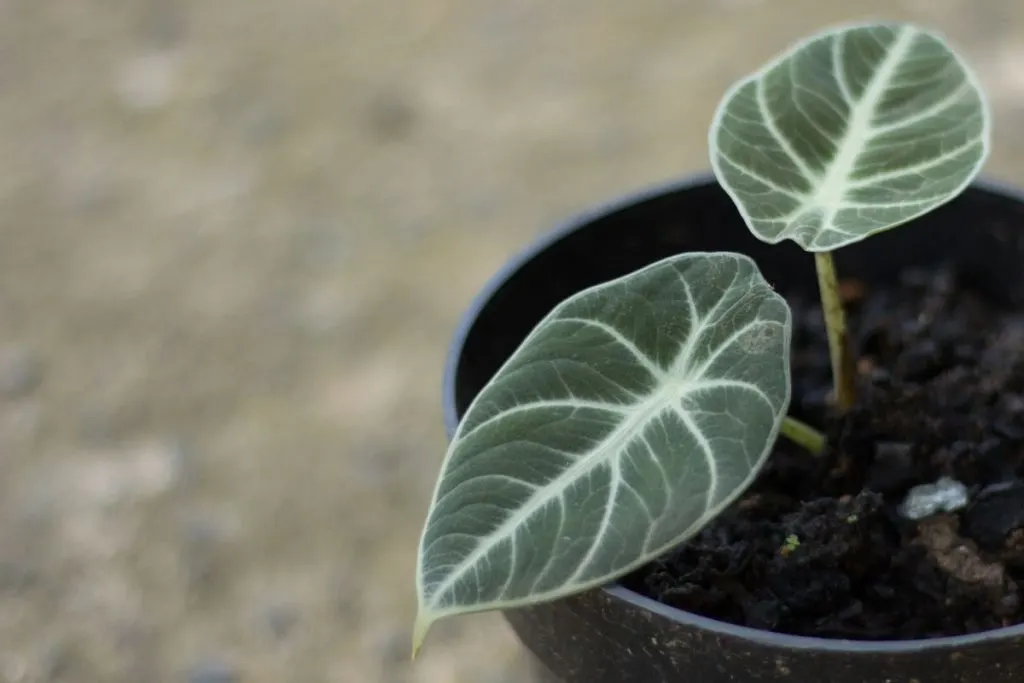
This tropical plant categorically does not tolerate dense heavy substrates – the soil for allocation should be slightly acidic, moist, and airy, with good mechanical properties. You can use a mixture of leafy, turbid soil (don’t add conifers – it’s too sour), peat, and sand (2: 2: 1: 3).
To improve the mechanical properties, add 1 part of coco coir to the resulting mixture. The ideal soil for black alocasia, when squeezed into a fist, retains its shape but disintegrates at the slightest touch.
Alocasia plant’s soil should be moist, but not overly moist all the time. That could kill your plant. Avoid soggy soil! Pebble tray, potting mix, and orchid bark also work for this plant as for most of the other tropical plants.
How Much Fertilizer Is Too Much Fertilizer For Black Alocasia?
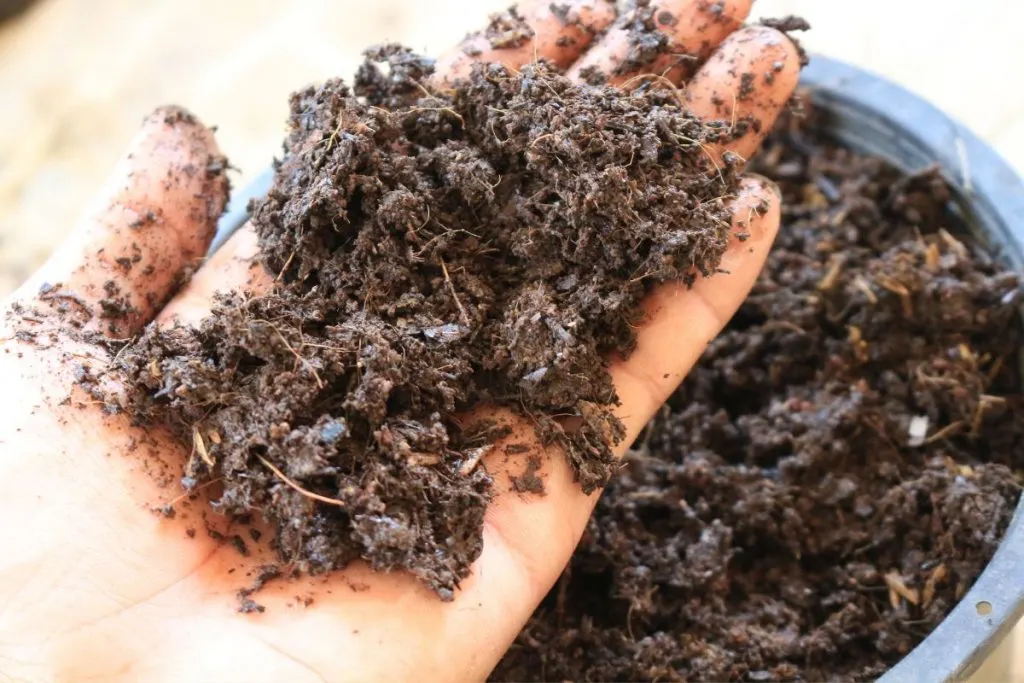
It is best to lubricate once a month with fertilizers with a high amount of nitrogen. For complete care of black velvet alocasia at home, it needs monthly mineral supplements.
The young indoor plant needs nitrogen and potassium to gain green mass and form immunity. In the winter months, you can lower fertilize your plant.
Adult shrubs will suffice for any feeding of ornamental leaves but still balanced fertilizer. You don’t want curling leaves and bad rhizome system problems.
However, you don’t want to overdo it. That can cause fertilizer burn and you may kill your plant with it. Avoid basic houseplant fertilizer as well.
Learn How To Propagate Alocasia Black Velvet
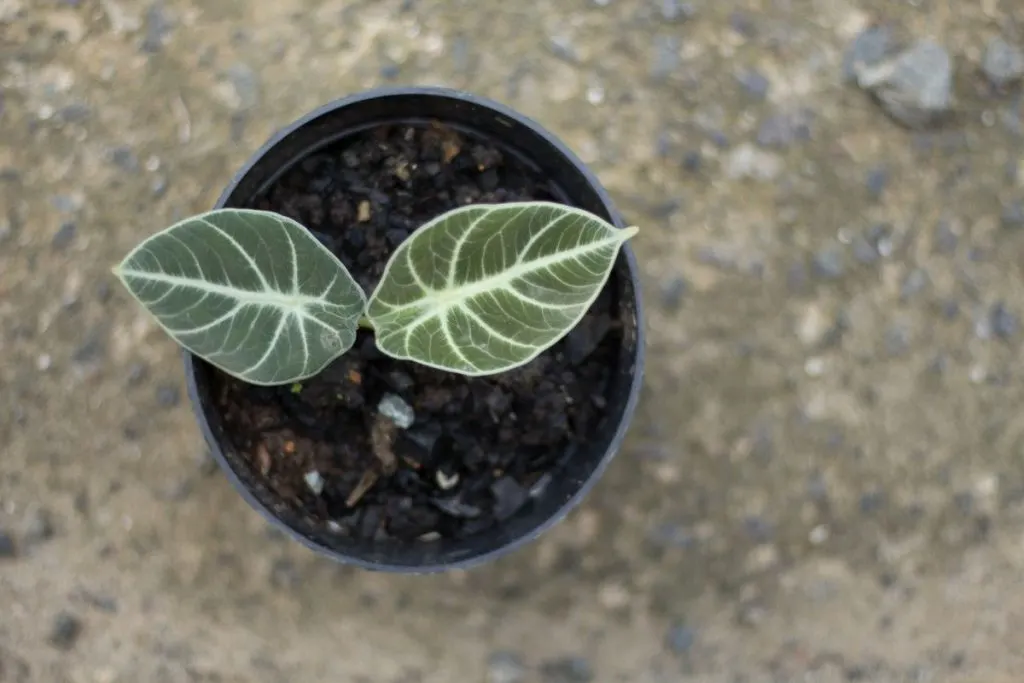
Propagation of black alocasia occurs in the spring with the help of offspring, stem cuttings, or the division of tubers. In the conditions of professional greenhouses, you can get seeds, but indoors it is almost impossible.
In addition, varietal characteristics of some forms, such as Polly alocasia, are not transmitted during seed cultivation.
Pruning Alocasia
Form cuttings according to the usual rules for aroid. Select the stem so that it has several points of growth and the root of the stem;
- treat the cut from the mother plant with a clean knife;
- use the same mixture of potting soil as in the original plant (peat and sand) for rooting;
- the presence of a greenhouse is mandatory and lower levels of heating;
- after you’ve done this, you’ll notice a new growth for 2 weeks.
Repotting Time For Black Velvet Plant
When transplanting black alocasia, it is recommended not to disturb the soil nodule. So carry it out by the method of transshipment:
- pour 3 inches of drainage and a small layer of earth into a new pot;
- extract carefully the plant;
- place it in the middle of the prepared container;
- add soil so that the measles neck remains open.
Growing alocasia at home, be prepared for its need to transplant annually.
All work with the plant is done only with gloves – it is poisonous, and even a light touch on the leaves or roots can cause irritation. After you’ve done with the running, keep your alocasia in bright indirect light.
Root Rot Issues On Black Alocasia
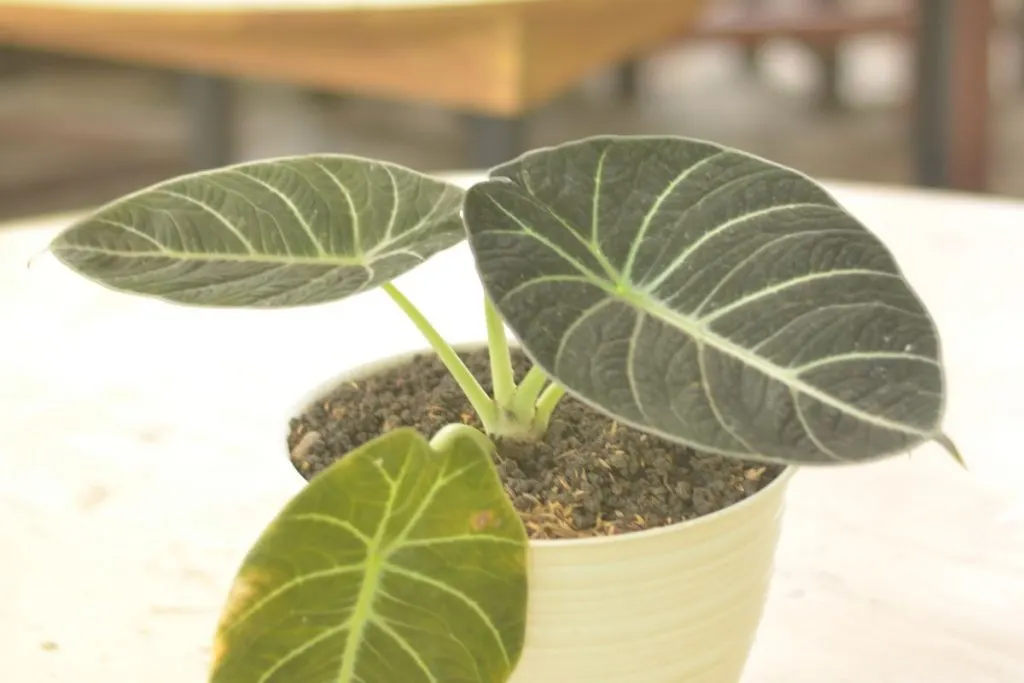
This disease can be caused by different types of fungi, and the most common is FUzoium oxysporium, Rhizoctonia solani. When this happens, you may notice brown tips on the dark green (black) plant’s leaves. Avoid direct light in this period.
In this case, there are not many solutions other than trying to change the soil. Also, rehabilitate the roots and eliminate excess water or fungi that may exist. “Clean” crispy leaf tips too.
To do so, use chemical treatments and reduce irrigation as much as possible.
Pests Of Alocasia Black Plant
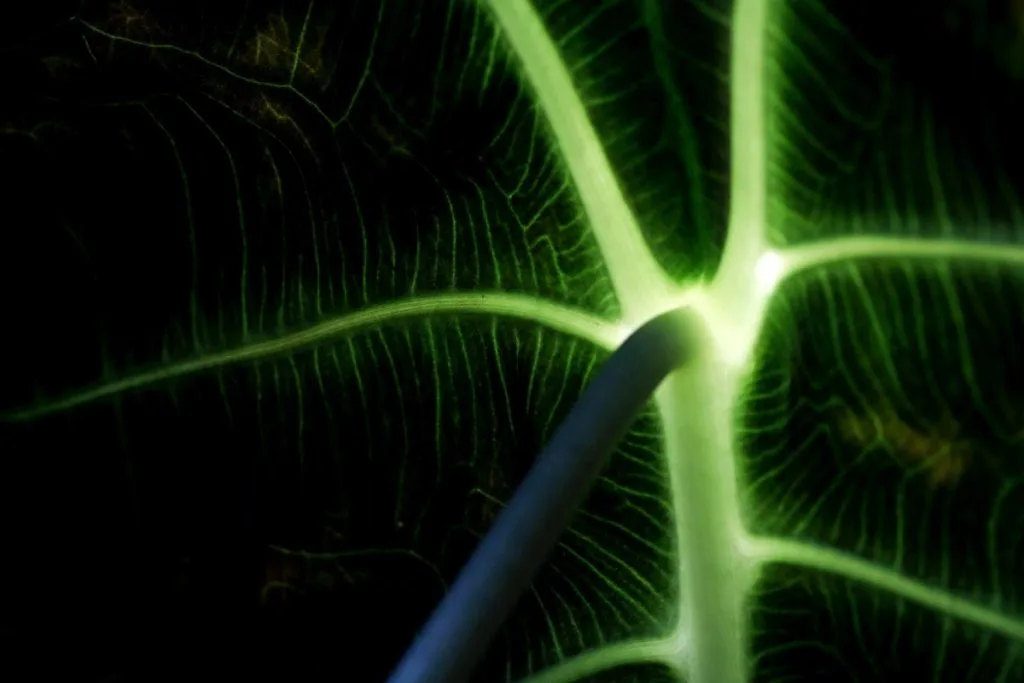
Among the pests that parasitize on alocasia are aphids, spider mites, clusters, and insects. Their appearance leads to yellowing and premature death of the leaves. The tick leaves a stallion on them – flour and scab – sticky shiny stains.
Appropriate chemicals are used to combat them. Remember that only systemic insecticides based on organophosphorus compounds can completely get rid of coccidia. Acaricides are used to fight cobwebs.
Black velvet alocasia can also be affected by fungal diseases, including powdery mildew and various rots. In the fight against such diseases, fungicides will help – and can be prevented by strictly following the rules of agricultural technology.
Other Possible Issues With This Plant
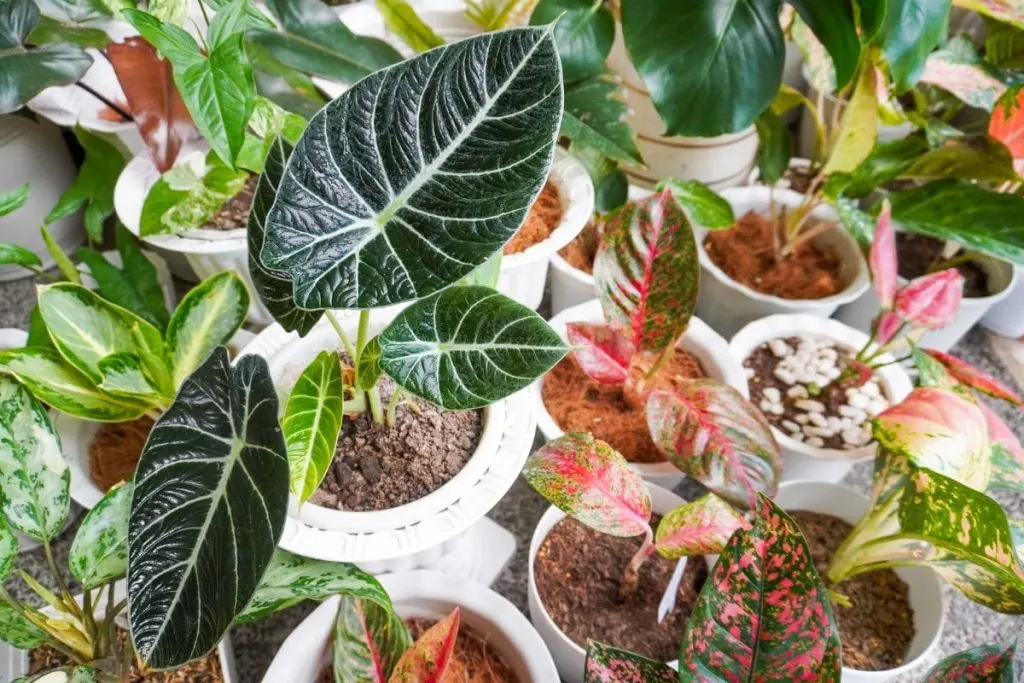
Slowed growth signals a lack of nitrogen. Feed the plant regularly. Dark rotten spots appear on the allocation with sudden changes in temperature and cold draft.
The appearance of these “symptoms” on the trunk indicates that the process of decay in the root system has begun. This often happens by excessive watering with cold water.
The plant must be saved immediately. If the green color of the leaves fades and you notice yellowing leaves – the alocasia plant doesn’t have enough light. This will affect the growth rate in the future, so the plant will get backlighted or transfer to a brighter spot.
Use Of Black Alocasia In Medicine
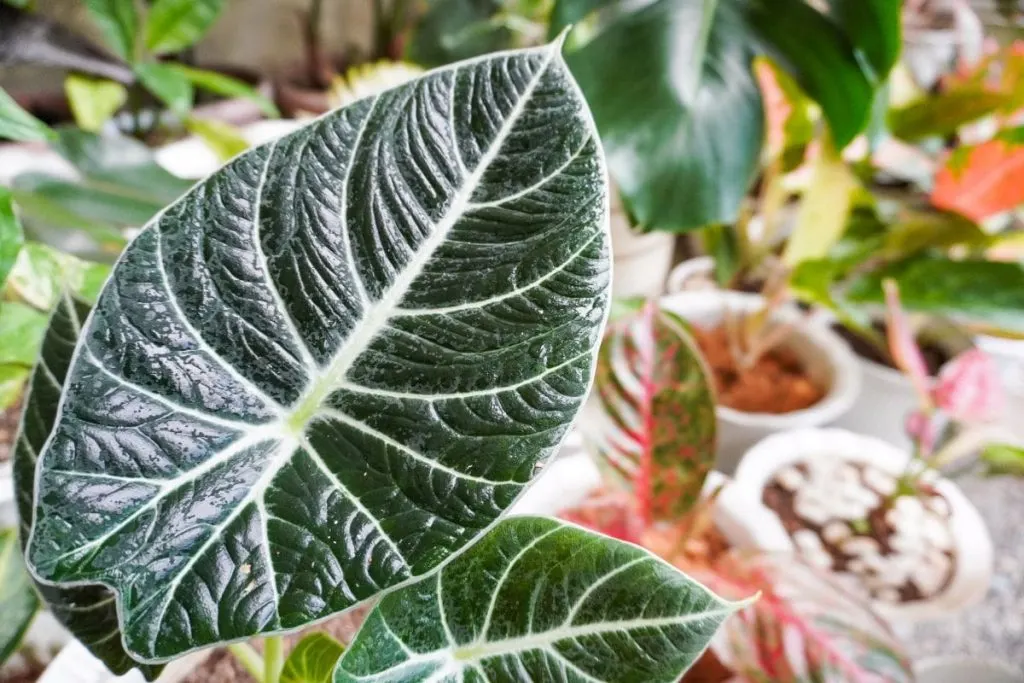
Few people know that black velvet alocasia has medicinal properties: it is used to prepare ointments, and in infusions, and sometimes fresh juice is used. Medicinal properties have all parts of the plant. Lemon balm preparations relieve toothache and stomach pain.
The leaves are used in the treatment of pneumonia and tuberculosis. The tuber soothes tumors if applied topically.
In diseases of the joints and trophic ulcers, a pus leaf is used, which is applied to the damaged area. You can mix it with a greasy cream, and use it as an ointment. Black alocasia drugs are popular in traditional Chinese medicine.
But it is worth remembering that they are extremely toxic – self-application of the course and dosage, as well as improper preparation, can lead to serious consequences.
Is Alocasia Black Velvet Rare Plant?
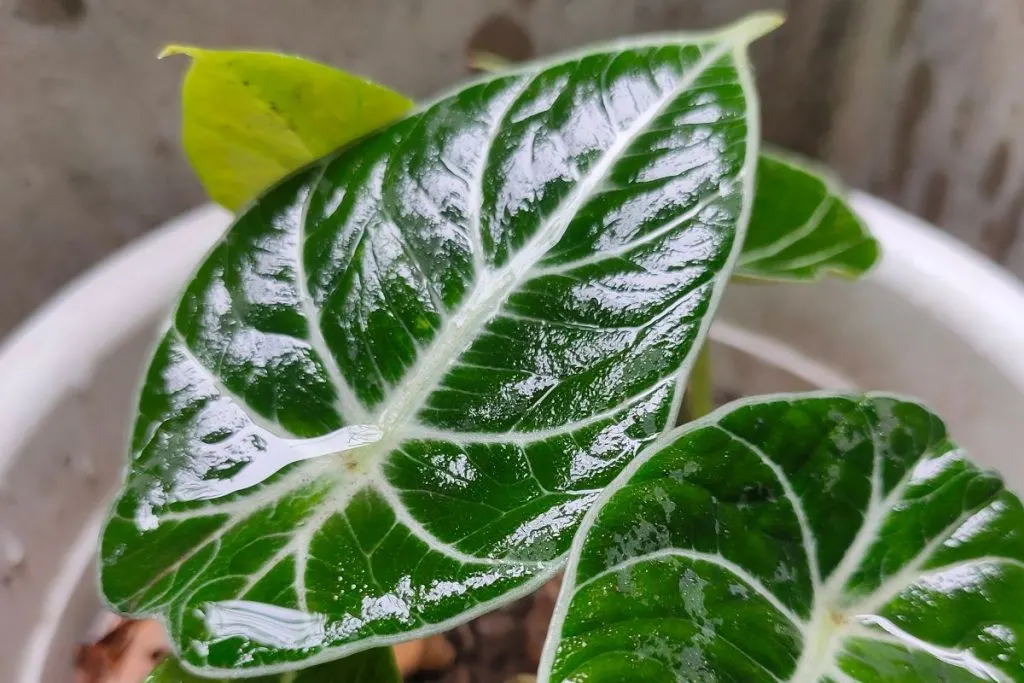
Black Velvet Alocasia is a rare dwarf variety and it grows slowly and stays small, so it is very convenient to grow it at home. Alocasia prefers constant, evenly moist soil.
Alocasia Reginula “Black Velvet” is one of the so-called “decorative allowances”, and we are lucky to have such a unique plant in hand.
This dense plant is prized for its soft, velvety, peeled leaves, which are almost black, except for the creepers.
In Conclusion
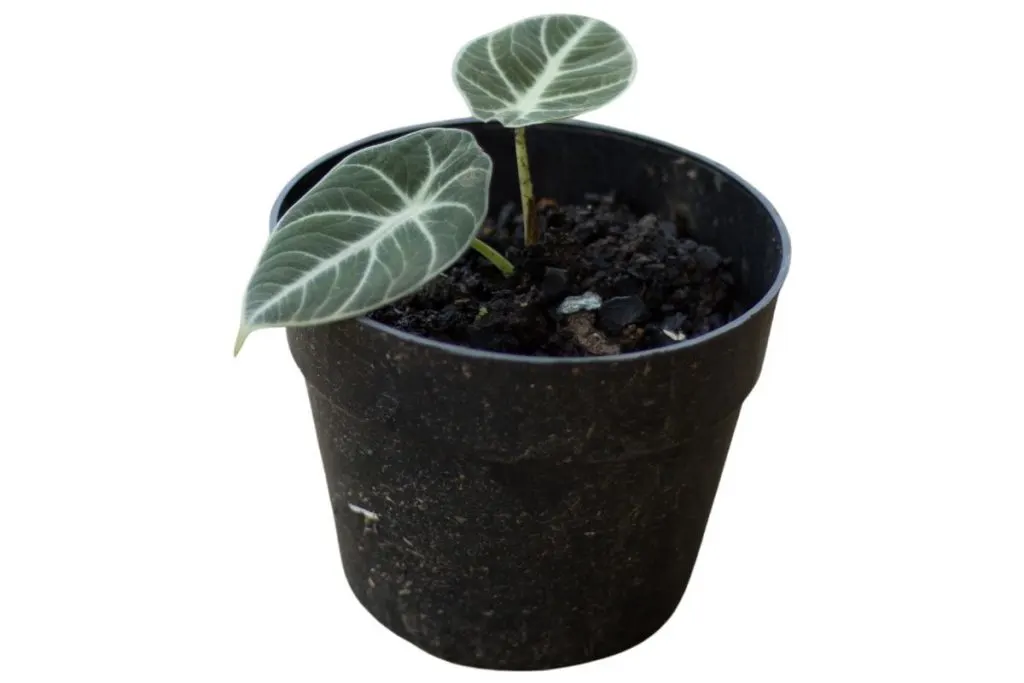
If you’re not fully satisfied with alocasia black velvet you can also check some other alocasia plants such as green velvet alocasia, alocasia zebrina, Adam alocasia, jewel alocasia, New Guinea Alocasia, and many others.
They will all do their best to fulfill your home! When you provide them with needed conditions such as the ones we read above, that’s it. Your alocasia will grow healthy in good soil conditions and indirect sunlight.
It is their growing season soon, make sure you memorize this ultimate care guide and that is it, you’re ready to purchase this plant!
Until next time darlings!

